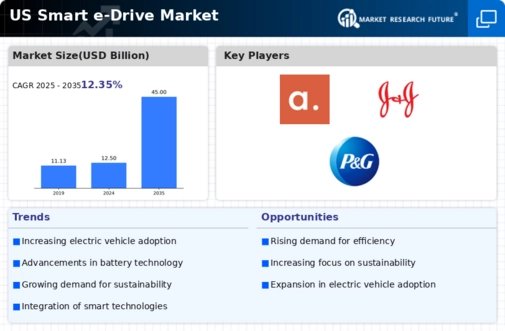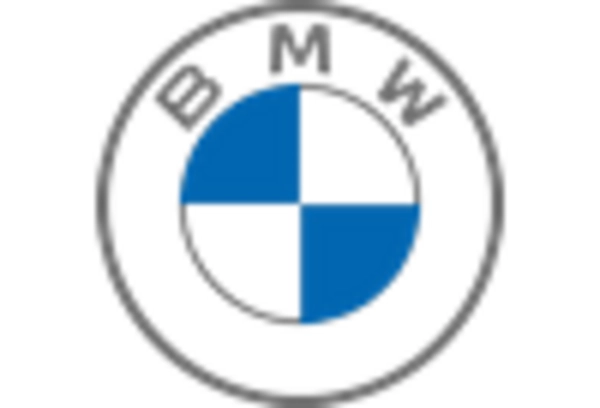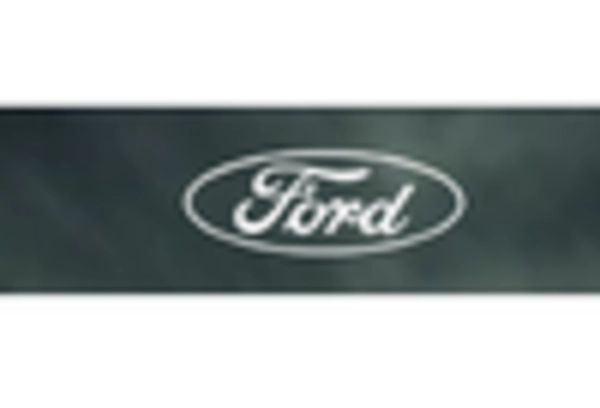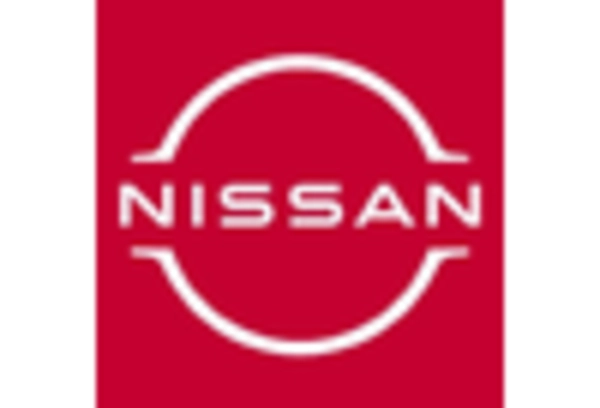Rising Fuel Prices and Economic Factors
Economic factors, particularly rising fuel prices, are influencing consumer behavior and driving the smart e-drive market. As gasoline prices fluctuate, consumers are increasingly seeking alternatives that offer cost savings and energy efficiency. The average price of gasoline in the US has seen significant increases, prompting a shift towards electric vehicles. In 2025, it is estimated that the total cost of ownership for electric vehicles will be lower than that of traditional internal combustion engine vehicles, making them more attractive to consumers. This economic shift is likely to encourage more individuals to consider electric vehicles, thereby expanding the smart e-drive market. Additionally, the potential for lower maintenance costs associated with electric vehicles further enhances their appeal, suggesting a strong correlation between economic conditions and market growth.
Government Support and Policy Initiatives
Government support and policy initiatives are crucial drivers of the smart e-drive market. Federal and state governments are implementing various incentives to promote electric vehicle adoption, including tax credits, rebates, and grants. In 2025, it is estimated that federal tax credits for electric vehicles will remain a significant factor in consumer purchasing decisions, potentially reducing the upfront cost by up to $7,500. Additionally, policies aimed at reducing greenhouse gas emissions are encouraging manufacturers to invest in electric vehicle technology. The establishment of stricter emissions regulations is likely to compel automakers to transition towards electric drivetrains, further stimulating the smart e-drive market. As these initiatives continue to evolve, they are expected to create a more favorable regulatory environment, fostering growth and innovation within the industry.
Technological Advancements in Electric Vehicles
The smart e-drive market is experiencing a surge due to rapid technological advancements in electric vehicles (EVs). Innovations such as improved battery technologies, enhanced energy efficiency, and advanced power electronics are driving the market forward. For instance, the introduction of solid-state batteries is expected to increase energy density and reduce charging times significantly. In 2025, the market for electric vehicle batteries is projected to reach approximately $100 billion, indicating a robust growth trajectory. These advancements not only enhance vehicle performance but also contribute to the overall appeal of EVs, thereby stimulating demand within the smart e-drive market. As manufacturers continue to invest in research and development, the integration of cutting-edge technologies is likely to redefine consumer expectations and further propel market growth.
Infrastructure Development for Electric Vehicles
The expansion of charging infrastructure is a critical driver for the smart e-drive market. As the number of electric vehicles on the road increases, the demand for accessible and efficient charging stations is becoming paramount. In 2025, the US is projected to have over 100,000 public charging stations, a significant increase from previous years. This development not only alleviates range anxiety among consumers but also supports the broader adoption of electric vehicles. Furthermore, partnerships between private companies and government entities are facilitating the establishment of charging networks, enhancing the overall convenience for users. The growth of charging infrastructure is likely to play a pivotal role in shaping consumer perceptions and acceptance of electric vehicles, thereby propelling the smart e-drive market forward.
Environmental Awareness and Corporate Responsibility
Increasing environmental awareness among consumers is significantly impacting the smart e-drive market. As individuals become more conscious of their carbon footprints, there is a growing preference for sustainable transportation options. This shift in consumer mindset is prompting manufacturers to prioritize eco-friendly practices and invest in electric vehicle production. In 2025, it is anticipated that the market share of electric vehicles will reach approximately 30% of total vehicle sales in the US, reflecting a strong commitment to sustainability. Additionally, corporations are recognizing the importance of corporate social responsibility, leading to initiatives aimed at reducing emissions and promoting green technologies. This alignment of consumer values with corporate strategies is likely to foster a favorable environment for the smart e-drive market, encouraging further innovation and investment.

















Leave a Comment